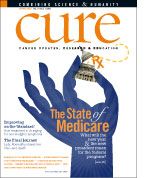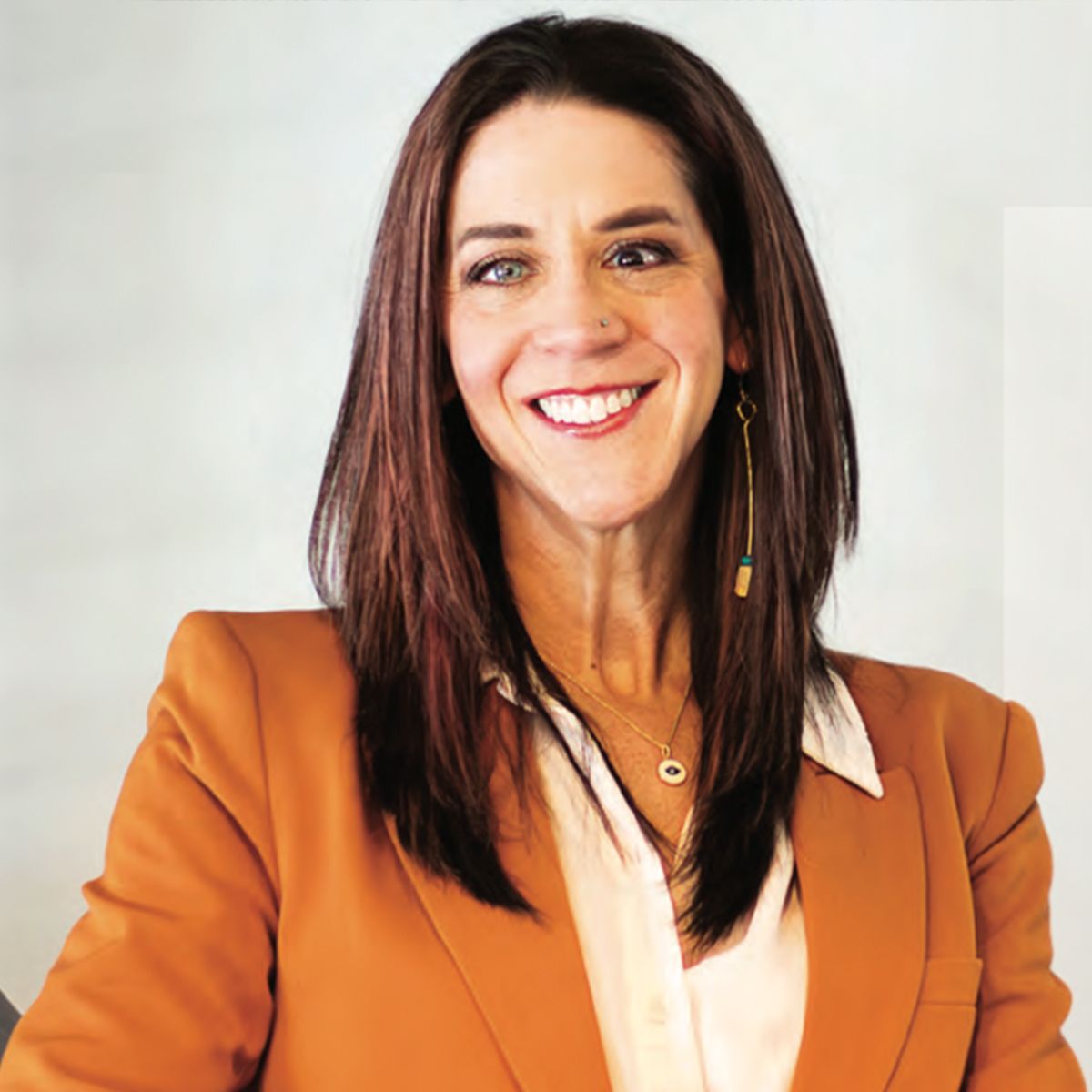Publication
Article
CURE
Web Exclusive: Resolving Your Own Death
Author(s):
How do we accept our own death? An essay from Kathy LaTour.
Writing the story on Judy Abernathy and her death was difficult, but one fascinating discussion occurred—resolving your own death. Judy signed up for a clinical trial three months after she received her initial diagnosis of inoperable lung cancer. The clinical trial included a brutal combination of radiation and chemotherapy given daily for weeks at a time. Judy talked to the doctor in charge who told her it would be tough, and that she could opt out at any time. Judy signed up because she wanted her children to know she was doing everything she could to stay alive. After a week of treatment she was so weak she couldn’t walk. She would lie in bed and cry out to God that this was not how she wanted to die. She wanted to be a part of the family, and in this condition she was going to be useless—and her family would have to take care of her.
She knew that this clinical trial may be her only hope, but she didn't want to die this way. She told the doctor she wanted out of the trial. Judy says the doctor became angry with her on the phone, telling her she would be dead in six months. It was the wrong approach to take with Judy, who told me that she shot back that how long she lived was not up to him, it was up to God. She said she would not be bullied into undergoing treatment that left her so ill she could not function.
When we discussed her decision to stop the trial, she said it was a defining moment for her because she resolved her own death. She knew she was going to die from the cancer. As she moved toward death, the only issue with which she became visibly distraught was the thought of leaving her grandchildren and not being able to be part of every achievement and life event. When she chose to stop participating in the trial she had to grieve the fact that she now had nothing standing between her and death. It was her faith and belief in a life after death “in glory” that made that bearable.
When I thought about it, I thought that Judy was lucky in a way. There was no doubt that she would die and she had decided to do it on her own terms. The thought brought me up short. Lucky? Why did I think that? Then I realized it had hit a part of my own history.
My discussions with her about resolving our own deaths took me back to the late 1980s when I was finished with treatment for stage 2 breast cancer, but living every day with the gut-wrenching knowledge that the cancer could come back and, if it did, I would die and leave my young daughter alone. We still don’t know why some women have a recurrence and others don’t, but in the late ’80s there were so few options for treatment of metastatic breast cancer that those of us who had been treated for breast cancer lived in a very real no man’s land of fear. My fear manifested in periodic anxiety so intense I would make specific appointments for blood work to ensure the cancer had not returned.
I lived with this fear and it seemed to be getting worse with every passing year—in part because as I obsessed over every ache and pain, I saw survivor friends learn that their aches and pains were, in fact, a recurrence. It felt like I was living at the edge of a precipice and I didn’t know how to back up. I clearly needed help.
Three years after my diagnosis, I finally joined a support group—not because I was against them, but because there weren’t any professionally facilitated groups in Dallas for women with breast cancer. My surgeon hired a therapist who started a group in her office. The support group was comprised of the most amazing women I have ever known, and over the course of the three years I was actively involved, I “died” with a number of them.
Knowing women who were dying of breast cancer only increased my fear and pain. I finally met with the group’s therapist alone to talk about my fear and to try and find a way to live with it—feeling there was no way I could ever make it go away.
I learned, that, like Judy, it wasn’t dying I feared, but leaving my child. I was so afraid she wouldn’t become the strong woman I wanted her to be. I was terrified that if I died she would be damaged and in pain her whole life. After a few meetings with the therapist I was able to arrive at a solution. I have been a very lucky woman in that I have a number of wonderful women friends. I got on the phone and called specific ones and assigned them stages of my daughter’s life should I die: One would take her shopping so her color-blind father would not be sending her to high school in mismatched colors; another was in charge of helping her decide on educational possibilities; her godmother would teach her to cook and sew; another would discuss spirituality with her; another would discuss sex. And one would play with her.
The women friends I called did not say, “You silly, you aren’t going to die.” I chose women who said, “Yes, now tell me what you would like me to do.” In every conversation, I also said, “and tell her about me; who I was and what I was like.”
After making the calls I experienced an amazing euphoria that others have told me they also find when they get to that place. I felt like I had finally moved into the valley of the shadow of death—and hung curtains. I made it my place and took control of it instead of letting it control me. Until then, I spent an inordinate amount of time trying not to think about dying; now, I had embraced it. It was such an amazing feeling I had to go back to the therapist to discuss the fact that I felt so free I was concerned I had somehow chosen to die. She laughed and said I didn’t have that much power. She was right. I had just moved into a place where my own death did not terrify me anymore.
It also gave me a chance to discuss the topic with other women, something I found many survivors are unable to do if they had not done the work around resolving their own death. I have also come to believe it is work we have to do to move on in life.
Talking with other women showed me how other women’s fears manifested, such as my friend LeeAnn, who had a recurring nightmare.
LeeAnn, who was diagnosed with a nasty breast cancer at 29 when her children were 2 and 4, was plagued with a recurring dream where she was chased by something dark on a huge horse. The dream would start with her running through a forest, hiding behind trees, which would then disappear. Exposed, the dark horseman would see LeeAnn and chase her until she woke up exhausted. It doesn’t take Freud to figure that one out.
I was surprised when LeeAnn told me she had not discussed her dream with anyone. One of the things breast cancer survivors face is friends telling us to get over it and get on with our lives, which we try to do. With me, she found a fellow traveler who wanted to talk about ways we struggle with a future that has become a maybe.
LeeAnn had had the dream for years when we talked about it. She said she was tired of running. She was beginning to talk about it in hopes it would lose its power over her. Of course, it meant naming her fear. I told her how I had finally made peace with my own possible death by finding friends to help raise my daughter should I die. LeeAnn said her fear came from the same place. All she wanted was to raise her children.
A few weeks later she called to tell me that talking about it had somehow given her the ability to turn and face her fear. What happened then was interesting. She said that as soon as the trees disappeared and she was exposed, she felt the same fear but something else too. Instead of running, she stood her ground. She was ready to fight and started running toward the dark horseman, screaming at it to leave her alone. And it disappeared. Poof! LeeAnn never had the dream again.
The knowledge of cancer’s ability to take our lives doesn’t go away. LeeAnn’s fears were realized. She did have a recurrence, went through treatment, and got four years of remission before a second recurrence. By then there were more treatment options she could take advantage of, which she did. We continued to communicate and she said that the fear was still gone even after the first recurrence because she could now face death head-on.
She ultimately had four recurrences, but she outlived every prediction given to her by the first oncologist she saw at her initial diagnosis. She changed oncologists, and she raised her children into their late teens before she died at age 44. She died too young, but her quality of life for those years was good.
Fortunately, I got to raise my daughter, who is now 23. I forgot to teach her to cook. She can’t sew, and she hates to shop, but she has a strong spirit and is the woman I wanted her to be—and then some.
For LeeAnn, death had been a quiet constant in her life and the lives of her children, just as it was for Judy, who also died an early death by today’s standards. But because these individuals could look at their death and face it, the end became their time to reflect and love those around them.








